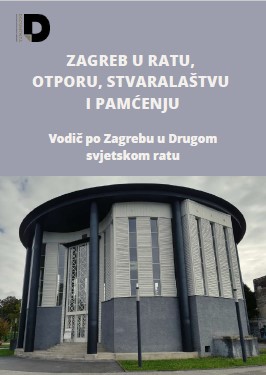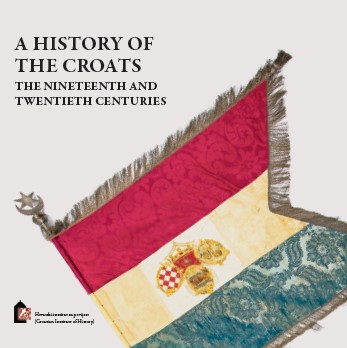
Zagreb u ratu, otporu, stvaralaštvu i pamćenju. Vodič po Zagrebu u Drugom svjetskom ratu
Pred vama je vodič po Zagrebu kojim želimo olakšati upoznavanje nekih ključnih mjesta stradanja i otpora u Drugom svjetskom ratu. Sažeti opisi povezuju povijesna istraživanja, odabrane ulomke iz književnih djela, dnevnika i osobnih sjećanja. U trenutku kad polako odlazi generacija koja je preživjela vrijeme najgoreg terora u povijesti grada nastojali smo stvoriti što više prostora za riječi i zapise svjedoka vremena i protagoniste povijesnih događanja. Razvoj ove publikacije podržalo je Veleposlanstvo Sjedinjenih Američkih Država u Republici Hrvatskoj, u sklopu programa "Osporavana povijest: novi pristupi obrazovanju o holokaustu". Documenta se pitanjem prezentacije ključnih događaja 20. Stoljeća bavi od svog osnivanja, tražeći najbolje načine približavanja prošlosti novim generacijama. Neki dosadašnji poduhvati uključuju obilazak mjesta sjećanja, počevši od 2010. i dokumentarnog filma Documenta Memoriae – Zagreb, redateljice Dijane Mlađenović dostupnog online na ovoj poveznici. U sagledavanju mjesta sjećanja i otkrivanju novih mogućnosti komemoriranja žrtava, posebno nas je poticao Saša Šimpraga, autor koncepta Virtualnog muzeja Dotrščina, s kojim od 2012. Sudjelujemo u organiziranju godišnjih memorijalnih intervencija dostupnim na poveznici www.dotrscina.hr. Paralelno s događanjima u prostoru parka, u javnom prostoru Trga bana Jelačića u rujnu 2012. mogao se razgledati prvi postav Virtualnog muzeja Dotrščina na temu Pisci I publicisti ubijeni na Dotrščini čija je autorica bila Nataša Mataušić, muzejska savjetnica Hrvatskog povijesnog muzeja.
More...

![„[…] a oto ginie marnie, pamięci nawet po sobie nie zostawując, na jaką zasłużył”](/api/image/getbookcoverimage?id=document_cover-page-image_1232894.png)